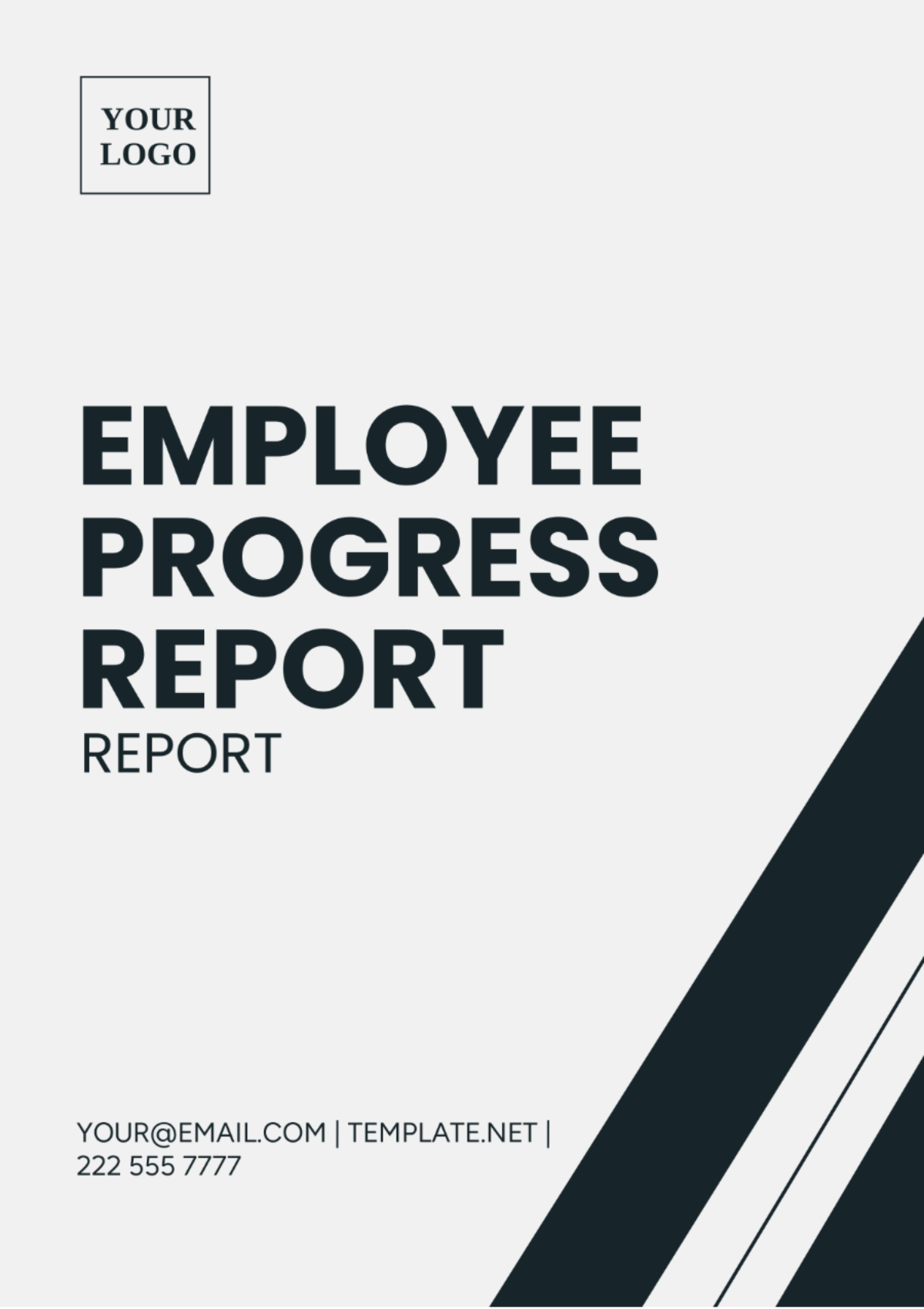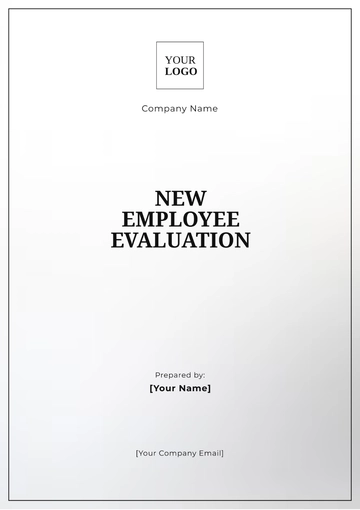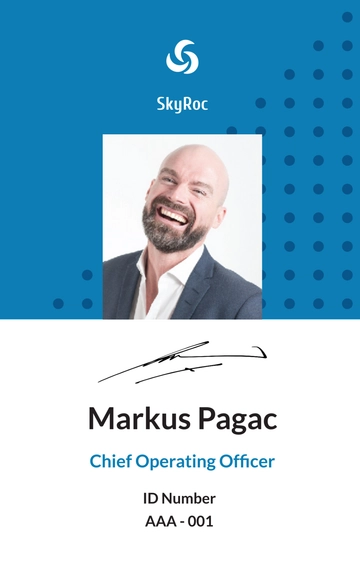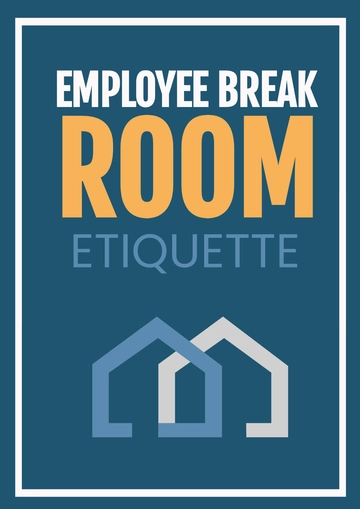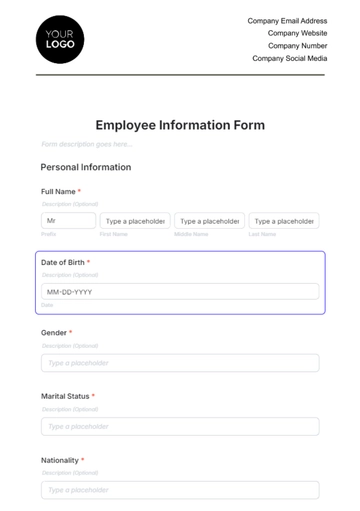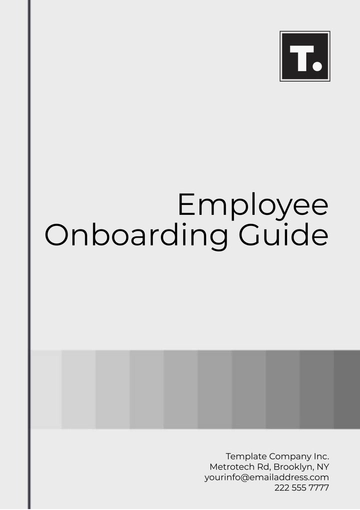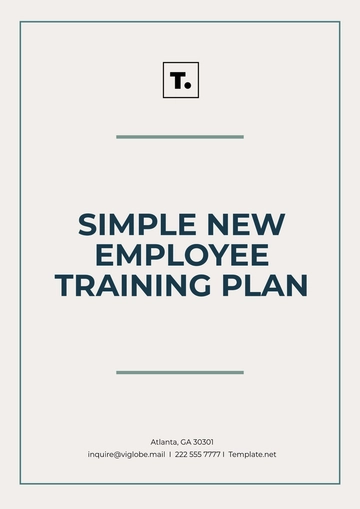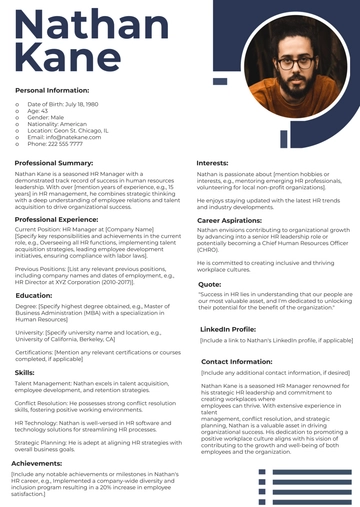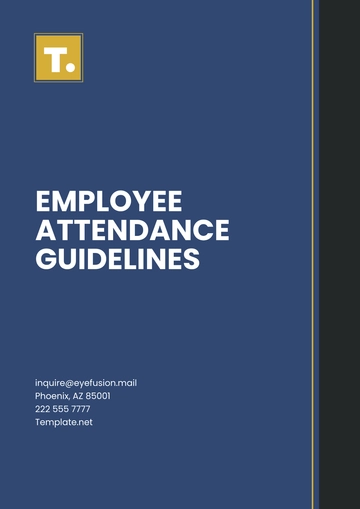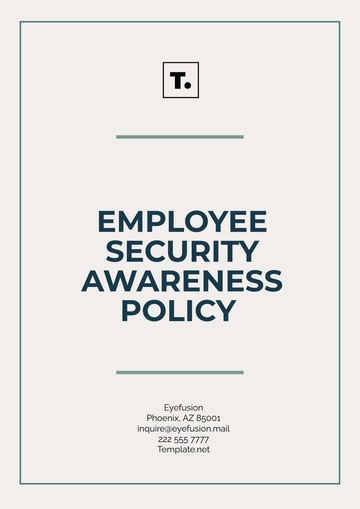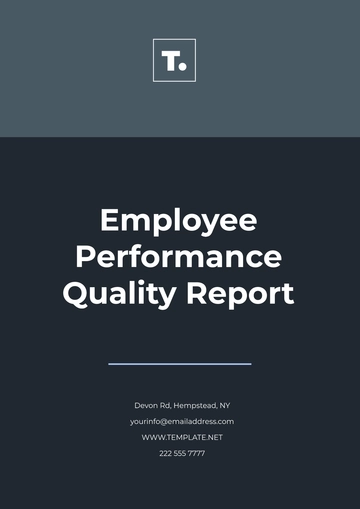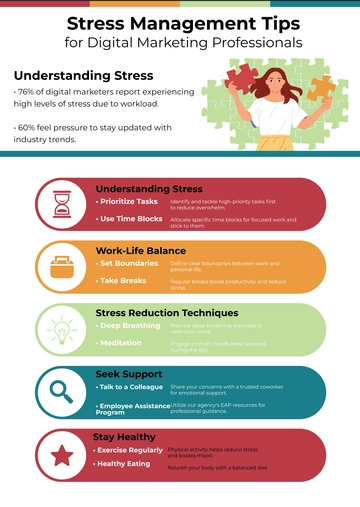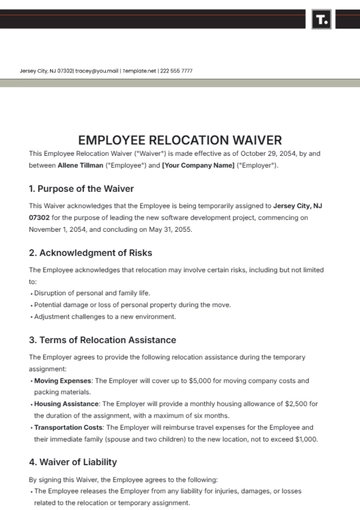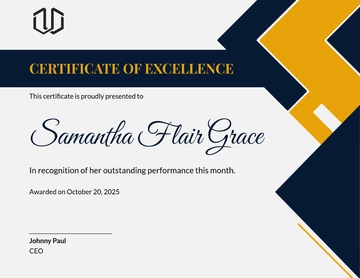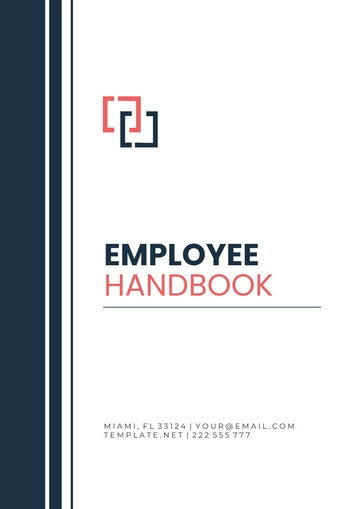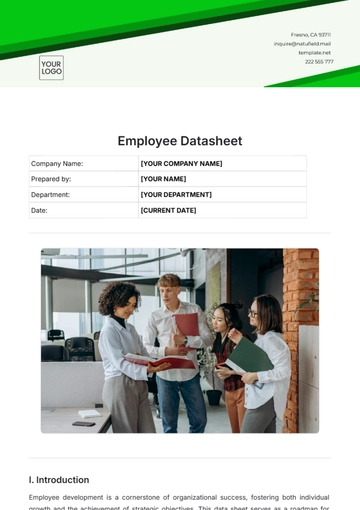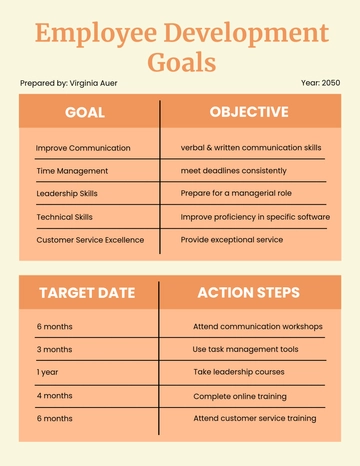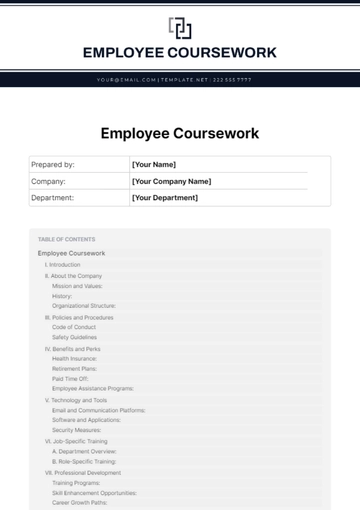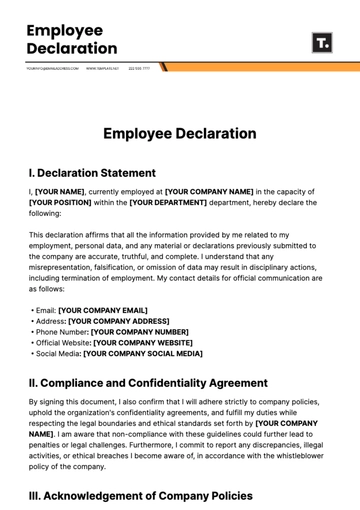Employee Progress Report
Prepared By | Company | Date Prepared |
|---|
[YOUR NAME] | [YOUR COMPANY NAME] | [DATE] |
I. Introduction
The Employee Progress Report provides a comprehensive overview of an employee's performance, achievements, and areas for improvement during a specific period. This report aims to assess the employee's contributions towards organizational goals, identify strengths and weaknesses, and set future development objectives. By evaluating employee progress regularly, organizations can enhance productivity, foster professional growth, and ensure alignment with company objectives.
Purpose
Evaluate the employee's performance against set objectives and key performance indicators (KPIs).
Identify strengths, achievements, and areas for improvement.
Provide constructive feedback to support professional development and career growth.
Set clear goals and expectations for the upcoming period.
Scope
This report will focus on analyzing various aspects of the employee's performance, including job performance, skills development, teamwork, and adherence to company policies and values. It will cover performance assessment, feedback, goals setting, and action plans for improvement.
II. Executive Summary
The Employee Progress Report for [REPORTING PERIOD] provides a comprehensive overview of the performance and development of staff within [YOUR DEPARTMENT] at [YOUR COMPANY NAME]. This document aims to assess individual contributions, identify areas for improvement, and support career development, aligning with organizational goals and values.
This summary synthesizes data gathered from various assessments and feedback mechanisms. It offers an actionable report that can assist in strategic decision-making, helping align employee performance with the long-term objectives of [YOUR COMPANY NAME].
III. Methodology
To gather relevant data and insights for this report, a structured performance evaluation process was followed, which included:
Data Collection
Performance Metrics: Collecting data on key performance indicators (KPIs), project outcomes, and achievements.
Feedback Collection: Gathering feedback from supervisors, peers, and clients through performance reviews and surveys.
Self-Assessment: Obtaining the employee's self-assessment to understand their perspective on performance and areas for improvement.
IV. Employee Information
Individual details of the employees under review are provided in this section to personalize the assessment and track progress effectively. Information is tabulated to ensure clarity and ease of access.
Employee Name | ID | Department | Role |
|---|
[EMPLOYEE NAME] | [EMPLOYEE ID] | [DEPARTMENT] | [JOB TITLE] |
V. Methodology
To gather relevant data and insights for this report, a structured performance evaluation process was followed, which included:
Data Collection
Performance Metrics: Collecting data on key performance indicators (KPIs), project outcomes, and achievements.
Feedback Collection: Gathering feedback from supervisors, peers, and clients through performance reviews and surveys.
Self-Assessment: Obtaining the employee's self-assessment to understand their perspective on performance and areas for improvement.
Data Analysis
The collected data was analyzed using performance evaluation tools and techniques to assess the employee's performance, identify trends, and develop actionable insights for improvement.
VI. Findings
Performance Assessment
The analysis reveals the following findings regarding the employee's performance:
Job Performance: [DESCRIPTION OF JOB PERFORMANCE]
Skills Development: [DESCRIPTION OF SKILLS DEVELOPMENT]
Teamwork & Collaboration: [DESCRIPTION OF TEAMWORK & COLLABORATION]
Adherence to Company Policies: [DESCRIPTION OF ADHERENCE TO COMPANY POLICIES]
VII. Performance Evaluation
The performance of each employee is evaluated against a set of predefined metrics tailored to individual role responsibilities and departmental goals. This evaluation encompasses various facets such as productivity, quality of work, punctuality, and cooperation.
Detailed scores and observations from supervisory personnel are encapsulated here to provide a multi-dimensional view of employee achievements and areas necessitating improvement. Regular assessment aids in fostering a culture of continuous enhancement.
VIII. Achievements and Milestones
Highlighting notable accomplishments of employees over the reporting period energizes the workforce and motivates collective striving towards excellence. Whether it's surpassing a sales target, successfully completing a crucial project, or demonstrating exemplary leadership, each milestone is documented here.
Acknowledgments not only boost morale but also serve as a benchmark for other employees. Celebrating these triumphs fosters a positive and productive work environment.
IX. Professional Development and Training
Continuous professional development is integral to maintaining the competitiveness and efficiency of [YOUR COMPANY NAME]. This section details the training sessions attended by staff, the skills acquired, and upcoming training opportunities.
Empowering employees through orchestrated training programs ensures adaptation to evolving market demands and technologies, thereby enhancing both personal and organizational capability.
X. Conclusion
In conclusion, the Employee Progress Report provides valuable insights into the performance and development of the employee. By implementing the recommended strategies and fostering a culture of continuous learning and improvement, [YOUR COMPANY NAME] can support the employee's professional growth, enhance team productivity, and achieve organizational success.
Report Templates @ Template.net
